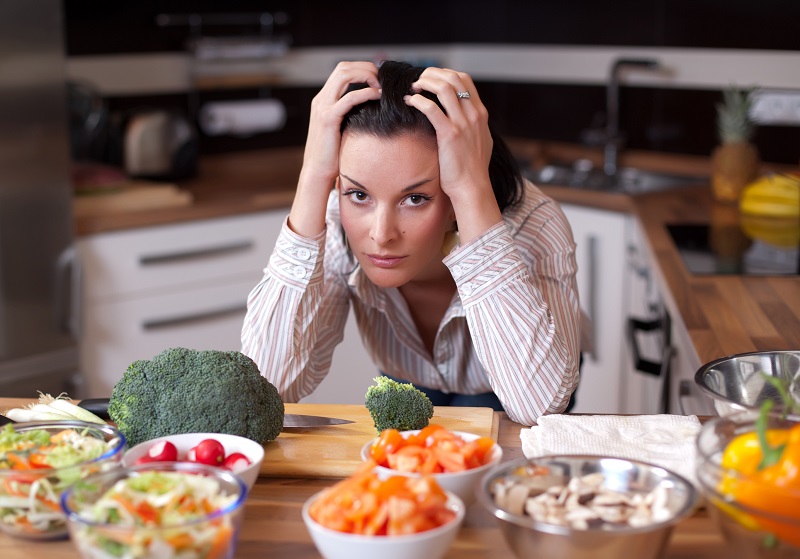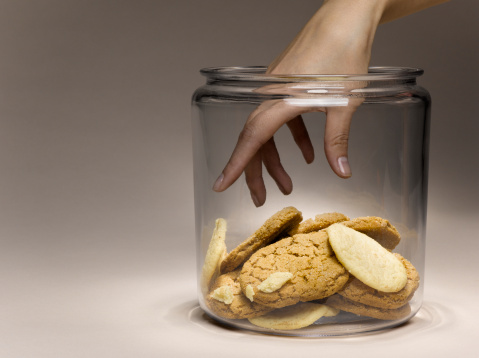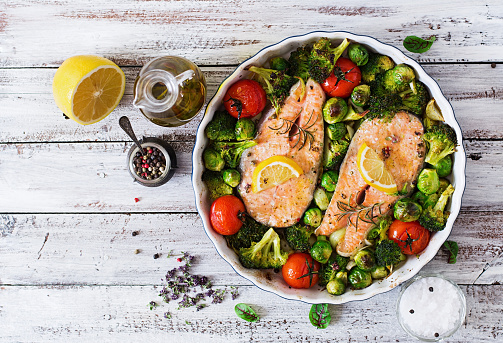Eating Clean? 5 Mistakes You’re Probably Making
If you’re striving to “eat clean,” you’re not alone: A survey of 450 registered dietitians in 2016 found that eating clean was the number one trend in diet, and it hasn’t slowed down in the past few years.What makes a food “clean”? Ideally, it’s minimally processed, with whole grains preferred over refined grains, and organic vegetables and fruits over those grown with pesticides. It’s choosing whole, “real” foods over junk. Eating clean can sometimes be a boon to your health: In one study published in the Annual Review of Public Health, scientists reviewed many popular, mainstream diets and found that eating a diet of minimally processed foods, mostly plant-based, was most associated with promoting health and fighting disease.
But eating clean is not, in itself, a weight loss plan. While you can lose weight while reducing the number of processed and packaged foods you eat, it’s not a silver bullet to lower numbers on the scale. If you’ve made your way to eating clean and losing weight, you may be falling into certain common traps.
Here are five common mistakes to avoid when eating clean:
Mistake 1: Having too much of a good thing.

Many clean eating guides specifically instruct against counting calories, but just because a food is “clean” doesn’t mean you can eat it with impunity. Certain foods that are loaded with nutrients your body needs, like peanut butter, avocado, quinoa, bananas or nuts, are also calorie-dense. According to the United States Department of Agriculture (USDA), one quarter-cup of almonds has 210 calories. But if you grab a few too many extra handfuls because they’re “clean,” your snack can jump up to 400 calories easily—as much as many full meals on a calorie-controlled diet plan.
Quality of calories is important, but quantity still matters: When it comes to your weight, 200 extra calories of “healthy” food will make you gain weight just as much as 200 extra calories of junk. And you may be more likely to over-serve yourself when it’s a healthy snack: One study in the European Journal of Clinical Nutrition found that Americans are wrong about guessing our portion sizes about half the time, and we’re especially bad when it comes to snack servings. So even if you’re eating clean, measure your portions if you want to lose.
Mistake 2: You eat the same thing every day.

Once you find a clean eating groove, you may have meal prep down to a science—doling out perfect portions of a balanced meal like chicken, rice and broccoli each day that’s clean and within calorie range. But that groove can become a rut and can cause two potential problems for your health and weight loss progress: First, a limited diet, even if it’s made up of healthy foods, can leave you deficient in certain nutrients. It can also leave you bored—and many dieters say boredom leads them to cheat, eating extra portions of foods they’ve been missing.
One rule of thumb for getting the nutrients you need: Eat a rainbow. Plan your meals throughout the week so they have a variety of colors, like oranges from carrots, purples from beets, and greens from lots of different sources. You’ll get a wider variety of satisfying nutrients and also satisfy your palate’s need for variety, meaning you’ll be less likely to stray from your plan.
Mistake 3: You let social media be your nutritionist.

Now, just because something looks like a rainbow doesn’t mean it’s diet-safe. If that multi-colored meal has been photographed with a sunset in the background and run through a glossy filter, it could look glamorous and healthy—but social media sheen does not make a meal clean. Smoothie bowls, for instance, are a favorite of labels like #cleaneating, but their picture-perfect stripes are often from toppings like sugary granolas or calorie-heavy lines of nuts or coconut.
Remember that these photos are taken for how they look, not how they’ll make you look. If you want to try to recreate a social media masterpiece, make sure you measure!
Mistake 4: You look at the front of the package, but not the back.

Clean eating involves buying fewer packaged foods, but even some minimally-processed foods can come in a package—and one trend in that packaging is “free from” messaging. That is, the package will say that the food is free from GMOs or free from gluten or free from pesticides.
Remember: The front of a package is marketing. The back has information. Check the ingredients list to see not what the food is “free from,” but what it has inside: Just because there are no GMOs or no gluten doesn’t mean the food is without preservatives, salt or other things that mean it is not, in fact, “clean” food. And don’t fall into the trap of believing that you should know everything on the ingredients label, or that it should contain only five or fewer ingredients: Ascorbic acid, for instance, sounds like a chemical, but it’s just Vitamin C. And vegetable soup has tons of ingredients, but you wouldn’t call it a “dirty” food.
Make sure the ingredients list and nutrition facts label fits the clean eating model you’re following—low in added sugars and sodium, or without preservatives or other chemicals, and choose foods based on information, not hype.
Mistake 5: You beat yourself up for eating “dirty.”

If some foods are clean, others must be “dirty,” right? This kind of thinking can be dangerous, according to National Eating Disorders, and can even lead to disordered eating patterns. The term “orthorexia” was coined in 1998 to describe an unhealthy obsession with eating clean foods, with elements akin to obsessive-compulsive disorder that can cause distress and affect quality of life.
Keep things in perspective: Eating clean is a lifestyle, but it doesn’t need to be an all-encompassing obsession to have a positive impact on your life. Healthy food should further your goals, rather than control your life. If you’re worried that you’ve crossed from interest into obsession, talk to your doctor, a nutritionist or a psychologist to make sure your keep your life—and your diet—in balance.
Want to eat better without all the work? Nutrisystem’s got a plan for you! Click here to learn more >
The post Eating Clean? 5 Mistakes You’re Probably Making appeared first on The Leaf.
from The Leaf https://ift.tt/2IYroZy






Post a Comment